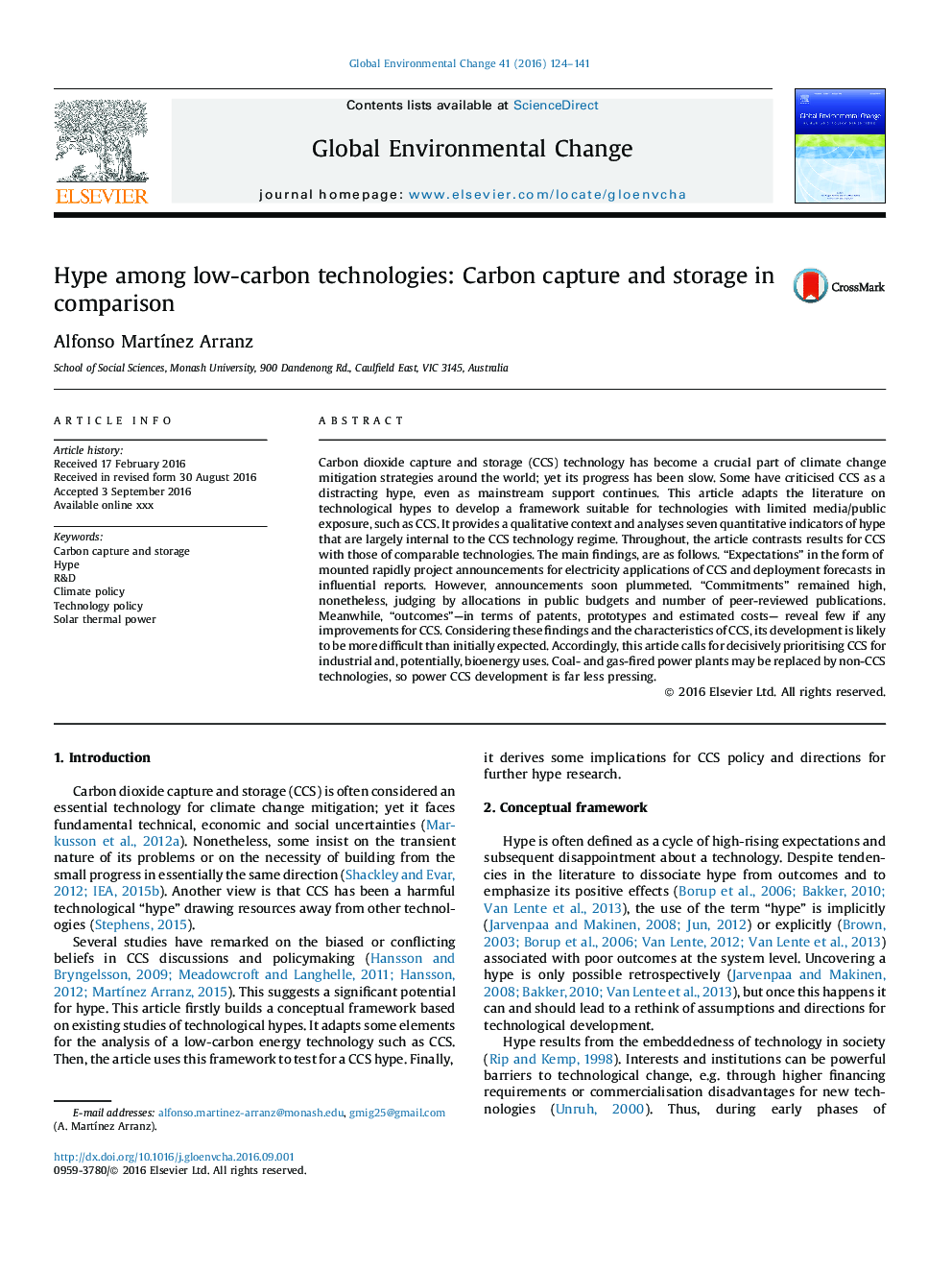| Article ID | Journal | Published Year | Pages | File Type |
|---|---|---|---|---|
| 7469197 | Global Environmental Change | 2016 | 18 Pages |
Abstract
Carbon dioxide capture and storage (CCS) technology has become a crucial part of climate change mitigation strategies around the world; yet its progress has been slow. Some have criticised CCS as a distracting hype, even as mainstream support continues. This article adapts the literature on technological hypes to develop a framework suitable for technologies with limited media/public exposure, such as CCS. It provides a qualitative context and analyses seven quantitative indicators of hype that are largely internal to the CCS technology regime. Throughout, the article contrasts results for CCS with those of comparable technologies. The main findings, which support the view that CCS has been hyped, are as follows. “Expectations” mounted rapidly in the form of project announcements for electricity applications of CCS and deployment forecasts in influential reports. However, announcements soon plummeted. “Commitments” remained high, nonetheless, judging by allocations in public budgets and number of peer-reviewed publications. Meanwhile, “outcomes”-in terms of patents, prototypes and estimated costs-reveal few if any improvements for CCS. Considering these findings and the characteristics of CCS, its development is likely to be more difficult than initially expected. Accordingly, this article calls for decisively prioritising CCS for industrial and, potentially, bioenergy uses. Coal- and gas-fired power plants may be replaced by non-CCS technologies, so power CCS development is far less pressing.
Related Topics
Life Sciences
Environmental Science
Environmental Science (General)
Authors
Alfonso MartÃnez Arranz,
